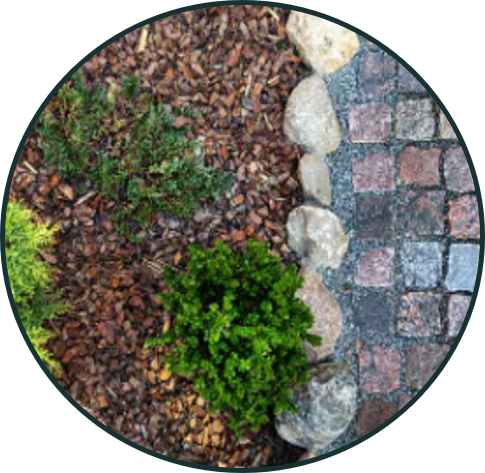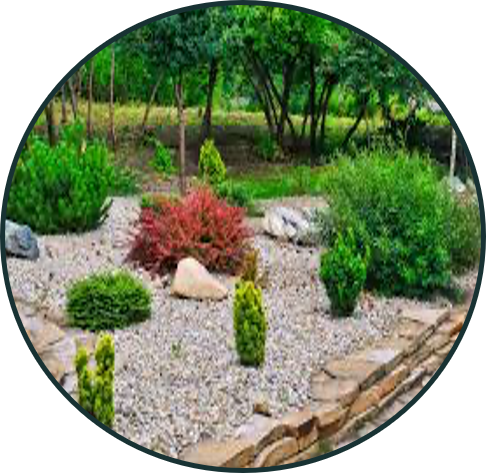Zone 2: Intermediate - Home Protection Zone
Zone 2 is the 5 – 20/30 ft (1.5 - 10/15 m) perimeter of the building and attached decks, depending on the steepness of any slope of the land.
Its purpose is to 1) reduce fire intensity as it approaches your home by interrupting flames, limiting the spread of embers, 2) limit the transmission of fire to the house, and 3) provide a safe zone for fire fighters to take direct action.
Proper management in this area ensures that if a fire does move toward your property, it slows down and loses strength before it can reach your home.
The problem
Vegetation in this zone can allow fire to spread quickly toward the home. Dense shrubs and closely planted trees create a continuous fuel path.
Action: Thin out plants and maintain clear spacing; Group vegetation and separate them from any structures
Consider ground covers and shrubs with occasional small tree
Prune vegetation so they don’t create “fire ladders,” which allow fire to climb from the ground up into taller vegetation or structures.
Grouping plants in small clusters, well-spaced and with separation, using for example decorative rock features, irrigated lawns
Best practice
Fire smart plants
Well-maintained vegetation
Grouped vegetation
Action: Consider tree selection, space trees and prune low-hanging branches,
Keep at least 10 ft (5 m) of horizontal spacing between tree canopies.
Prune trees so branches are at least 6 ft off the ground (or 1/3 the height for smaller trees).
On a sloped site, keep 30 ft (15 m) of space between canopies
Avoid planting shrubs directly under trees (eliminate “ladder fuels”)
Best practice
The problem
Flammable plant species and invasive growth increase ignition risk.
Action: Choose the right plants
Plant mostly native, fire-resistant species that stay green and hold moisture.
Regularly water and prune to remove dead material.
Best practice
The problem
Mulch and ground cover can trap embers and ignite.
Action: Replace flammable mulch with safer alternatives.
Use composted wood chips applied in a 2 – 4-inch layer.
Combine mulch with gravel or stone pathways where possible.
Avoid rubber or plastic mulch
Best practice
Specially treated composted wood chips smoulders but burns slower and at lower temperatures than other mulch. Inorganic mulches offer better fire-proofing, but composted wood chips are a more sustainable choice and can be used in Zone 2.
Break up mulch with stone
The problem
Unbroken stretches of vegetation, especially on allow fire to move directly through the zone.
Actions: No life and dry vegetation around structures
Add hardscape elements such as stone paths, retaining walls, or dry creek bed
Use terracing or walls on slopes to slow fire and block embers
Best practice
Do not
Don’t plant shrubs directly under trees (avoids “ladder fuels”).
Don’t let vegetation grow dense and continuous toward the house.
Don’t use rubber or plastic mulch (burns very hot and long).
Keep horizontal and spacing between tree canopies.
Keep vertical spacing and prune lower branches.
Use native, more fire-resistant plants and keep them watered and healthy.
Remove invasive and more flammable plants with high resin content.
Break up plants with hardscape: stone paths, gravel strips, retaining walls, terraces
Do















